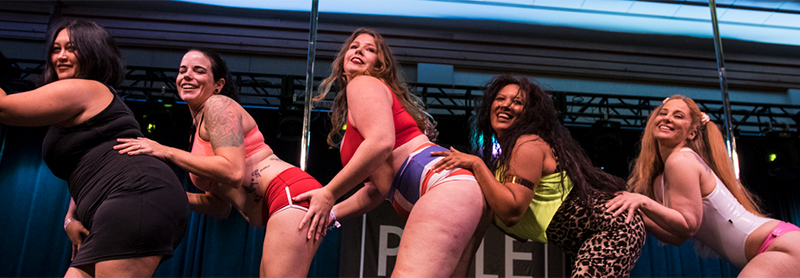A train-cation is a trip (usually away from home) where you focus for a specific…

What is a SWOT Analysis?
A SWOT analysis is a straightforward, yet powerful process to help you make informed, business decisions. SWOT is an acronym that stands for Strengths, Weaknesses, Opportunities, and Threats. You can use this process as a planning tool for opening or revamping studio, for creating an event, making a new product or even in positioning your unique style as a pole dancer to get more followers on Instagram. It can be positioned as relevant to anyone in any pole-related business and at any stage of creating or improving that business.
The first step in your analysis is to identify what you are using the tool for. For example, do you want to stand out as a competitor/performer in the community or are you launching a new apparel line? The more specific you set your intentions, the more specific and useful the responses you’ll receive using this analysis.
You can list your overall or general strengths, weakness, opportunities, and threats or you can break them out into departments or aspects of your business such as marketing or staff.
Check out this list of 48 questions to ask in your SWOT Analysis from SCORE.
For the purposes of showing how this tool can specifically be used in the pole industry environment, our example (below) focuses generally on opening a studio.
Strengths
Be specific and focus on internal factors such as your quality and resources—what do YOU bring to the table that will make your studio successful? Some strengths might include:
- Owner is well known in the local community
- Unique class structure/offering
- Owner has previous business experience.
Weaknesses
Then list your weaknesses, which should also focus on your internal factors:
- No training program/way to integrate new teachers/other staff quickly
- Owner still has a “day job” and may not be focused 100% on studio growth
- No maintenance program or schedule, “hoping” equipment doesn’t break.
After listing as many strengths and weaknesses as you can while being as honest as possible—this is not the time to “be nice” to yourself or within your team; being brutally honest will help you identify problems and then fix them—now it’s time to focus on the external factors impacting your business.
Opportunities
Opportunities are external factors that can influence your success. They may include things like:
- Several other successful boutique fitness (i.e., Pilates, Yoga, Spin) are in the area and thriving (expanding/have been open more than a year)
- No other pole studios within 10 miles—your studio would be unique
- Pole dance/pole fitness continues to be featured in mainstream pop culture.
Threats
Many of your opportunities may have a flip side threat to them that you may be able to mitigate but do not have direct control over. Some threats that relate to the listed opportunities above may include:
- Since no pole studios exist in the local area, significant education is needed/may run into public resistance (neighbors, bad/inaccurate press, etc.)
- The style of pole represented in mainstream pop culture might not be the same style you teach in studio
- Too many boutique fitness options may dilute the market for even more boutique fitness classes.
Now What?
After you have collected a list of all your strengths, opportunities, weaknesses and threats; rank them so you can focus on what you or your group of trusted advisors or employees think are the most important issues to focus on. Then develop your strategic plan (if you’re already in business) or your business plan (if you are not yet in business) addressing how to use your highest rank strengths to capitalize on your biggest opportunities, how to reduce the biggest threats and how to mitigate weaknesses.
This process is only useful if you are honest with yourself. If you don’t know how to manage your business finances—get help! If you are concerned about public opinion: talk to the press first; be involved in your local community and never, ever be confrontational—focus on education.
Use your SWOT analysis as a way to honestly catalog all the internal and external, positive and negative factors affecting your business success. Once complete, you can formally or informally use this information to impact how you run your business through creating specific plans with clear actions and timelines.
When to Update?
Redo your SWOT analysis as things change or evolve—perhaps there is a major shift in the demographics of your area or perhaps you have developed a training program that you think could be a new stream of revenue. Do a new SWOT if you are starting a new part of your business perhaps adding merchandise to a training business or moving from a solo-preneur to having employees. This simple tool can have a big impact!



